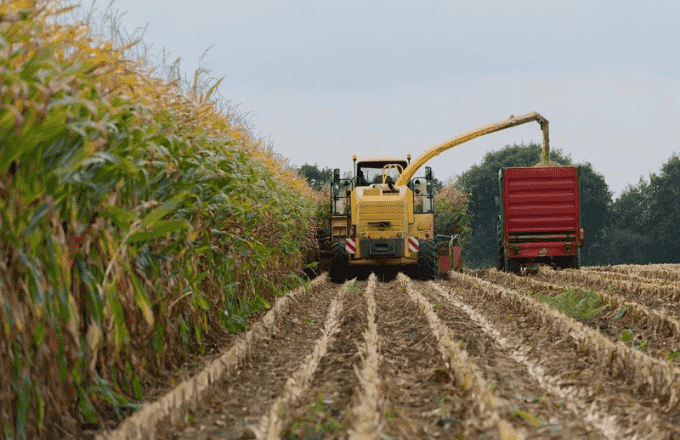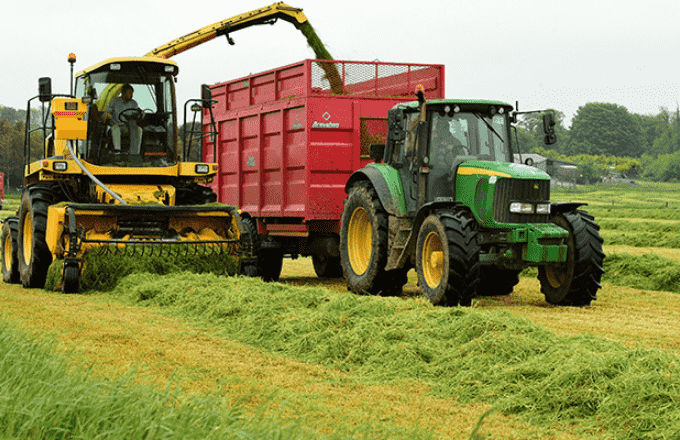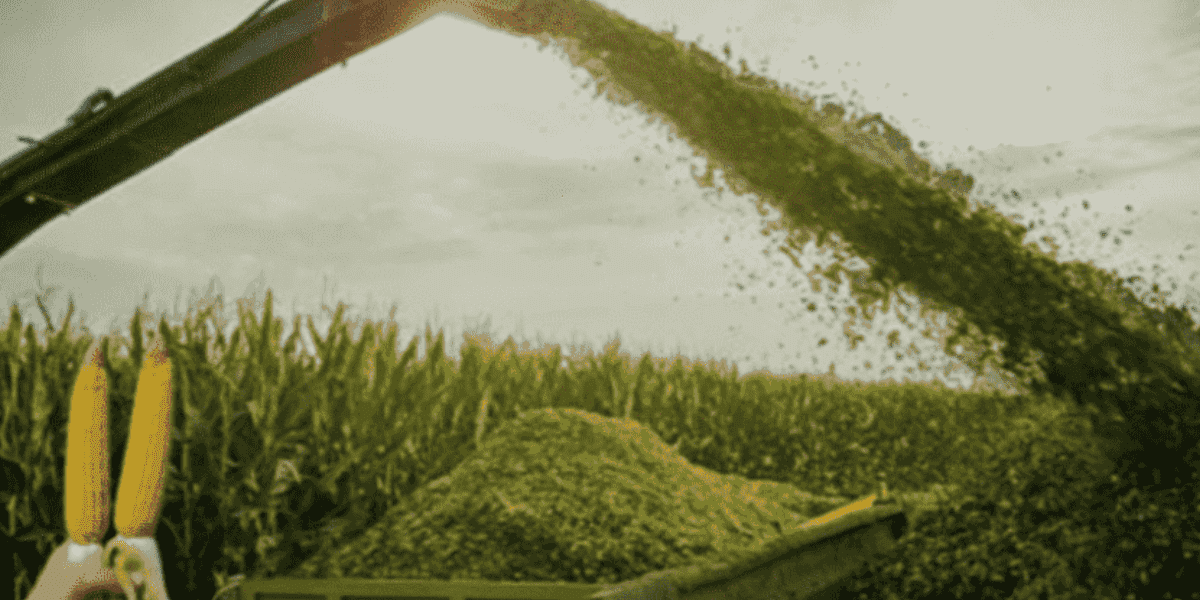What is Corn Silage; It is a crucial, nutritious, and prevalent feed component for livestock, predominantly cattle. Its application in agricultural practices is revered due to its cost-effectiveness and nutritional richness, aiding farmers and promoting sustainable agriculture.
Table of Contents
Definition of Silage
Define Silage
Silage is a fodder conserved through fermentation, usually stored in a silo. This fermentation process, known as ensiling, enables the preservation of fresh forage plants such as corn, aiding in providing food for livestock in winter or when fresh forage is unavailable.
Silage Meaning
Silage refers to the material produced by controlled fermentation of high moisture content forage crops, securing optimal nutritious value and palatability for animal consumption.
Looking for top-notch animal feed? Choose Corn Silage. It’s perfect for farmers focused on their herd’s health. Store it in Silage Bags to keep its nutrition intact. For easy storage, use corn silage bales. It’s a smart move for better livestock health and management.
Uses of Silage
What is Silage Used For
Silage is extensively used to feed ruminant animals like cattle and sheep. Its high nutritional content and preserved freshness make it optimal for maintaining livestock health and productivity, especially during forage scarcity.
Silage in Agriculture
silage is a lifesaver during adverse conditions, allowing farmers to manage feed supply efficiently. It’s a sustainable feeding solution that helps reduce feed costs and improve livestock production.
Creation of Silage
How is Silage Made?
Corn silage is made by tightly packing green forage in a way that it ferments without air. This turns sugars into acids, preserving the feed. Corn silage suppliers in Pakistan offer this nutritious feed for animals.
Silage Crops
Common silage crops include corn, sorghum, and alfalfa, each having distinct nutritional profiles, aiding in diversified livestock nutritional needs.
Corn silage is a great food choice for your cows and goats. If you want your cows to give more milk, this food can help. It has all the good things your animals need, like proteins and vitamins. The best part? Are you worried about the corn silage price in Pakistan?
The corn silage producers in Pakistan offer it at an affordable rate. You can buy it without breaking the bank and store it for a long time; it will go well. Despite needing little water, it thrives even in dry areas. Plus, its quality remains top-notch in every season. So, with corn silage, your animals get good food all year round.
KEY FEATURES
- Good for cows and goats
- Gives energy and has healthy stuff
- Helps cows give more milk
- It saves money and lasts long
- Needs less water to grow
- Good quality food all year
- It can be stored for a long time.
| PROS | CONS |
|---|---|
| Good food for animals | None |
| Helps cows give more milk | |
| It saves money and water | |
| It can be kept for a long time |
Types of Silage
Corn Silage
It derived from whole corn plants, is esteemed for its high energy content and digestibility, making it a favorable choice for dairy and beef cattle.
Silage Forage
Silage forage can range from grasses to legumes, each providing unique benefits and nutritional compositions, allowing for varied applications in livestock feeding.


Benefits of Corn Silage
Nutritional Value
It boasts high energy levels. It is rich in fiber and protein, promoting optimal growth, milk production, and overall livestock health.
Cost-Effectiveness
Being less reliant on external feed sources and reducing feed expenses, it is a cost-effective solution for farmers.
Key Features and Benefits for Farmers:
- High Nutritional Value: Corn Silage is packed with essential nutrients, providing your animals with a balanced diet that ensures optimal growth and productivity.
- Improved Digestibility: The silage-making process enhances the digestibility of corn, making it easier for animals to absorb nutrients.
- Cost-Efficiency: With Corn Silage, you can save on feeding costs while maintaining the health of your livestock. It’s a win-win for your farm and your wallet.
- Extended Shelf Life: Thanks to proper storage techniques, Corn Silage remains fresh and nutritious for an extended period, reducing waste.
- Consistent Quality: Our premium Corn Silage maintains a consistent quality batch after batch, giving you peace of mind in your livestock’s diet.
- Boosted Milk Production: Dairy farmers will appreciate the positive impact Corn Silage has on milk production. Healthier cows mean more milk in the tank.
- Easy Handling: Corn Silage is easy to transport and store, saving you time and effort in managing your feed inventory.
What is Corn Silage in Animal Feed
Silage for Cows
In cow feed, it acts as a versatile ingredient, balancing the ration and enhancing milk production due to its enriched energy content.
Silage for Cattle Feed & Silage Cow Feed
For dairy and beef cattle, and it offers a balanced and nutritious diet, supporting optimal weight gain and productivity.
| PROS | CONS |
|---|---|
| High nutritional value | It may not be suitable for animals with specific dietary restrictions |
| Improved digestibility | Inadequate preservation can lead to nutrient loss and spoilage, posing risks to animal health. |
| Cost-efficient feeding | Ineffectual ensiling can cause significant nutrient degradation, diminishing the feed’s nutritional value. |
| Extended shelf life | |
| Suitable for various livestock |
Corn Silage vs. Other Forage: Comparative Analysis & Suitability for Livestock
Understanding the differences between silage and other forages helps discern their suitability for different livestock species, aiding in informed feeding strategies.
Innovations in Silage Production: Modern Techniques & Sustainability
Exploring advancements in silage production reveals modern, efficient, and sustainable methods, fostering enhanced agricultural practices.
The Role of Corn Silage in Sustainable Agriculture
It contribution to sustainable agriculture is paramount, promoting resource efficiency, environmental conservation, and economic viability.
Conclusion
Corn silage is a cornerstone of modern livestock farming, providing a cost-effective and nutritionally rich feed source that supports the health and productivity of cattle and other ruminant animals. Through the ensiling process, fresh forage, such as corn, is transformed into a well-preserved, high-energy feed option, making it a valuable asset for farmers, especially during times of forage scarcity.
Frequently Asked Questions (FAQ’s)
How does this silage contribute to livestock health?
It boosts livestock health with high energy content, enhancing milk production and growth.
What are the economic advantages of using corn silage in farming?
Economic benefits of it, include reduced feed costs, increased yield, and improved herd performance.
Can the improper ensiling process affect the quality of corn silage?
Improper ensiling can spoil it, leading to nutrient loss and potential health issues for livestock.
How does corn silage compare to other forage in nutritional value?
It often surpasses other forage in nutritional value, offering more energy and digestibility.
What innovations are reshaping the future of its production?
Innovations like precision planting and improved fermentation techniques are revolutionizing its production.
Is corn silage a sustainable solution in modern agriculture?
It promotes sustainability in agriculture by optimizing resource use and reducing environmental impact.
For more details, check out our corn silage FAQs.







